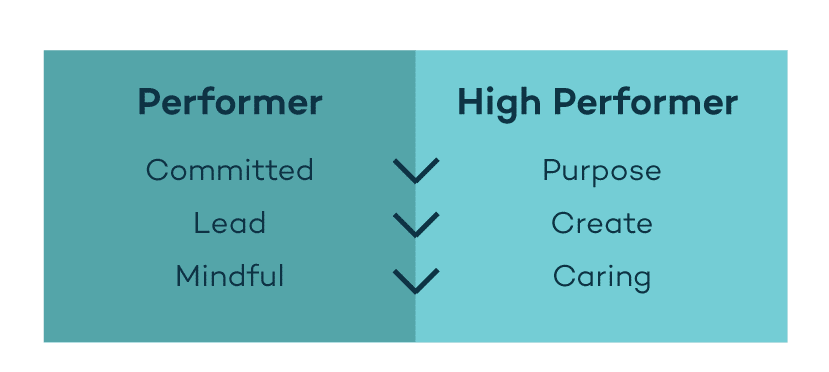The Differences Between a Performer and a High Performer

Introduction
At its core, performance relies on a combination of awareness, discipline, effort, and openness. Every day, billions of individuals engage in performance, whether it’s in a professional context, in the realm of education, or in their personal lives with friends and family. However, not everyone exhibits the same level of engagement and effectiveness in their performance.
Individuals can be categorised into two groups: performers and high performers. Subtle but significant differences separate the two. Performers are characterised by their commitment, leadership ability, and mindfulness. High performers, meanwhile, possess a clearly defined purpose, a unique capacity for creation, and a deep sense of care.

The high performer will always delve a layer deeper. They want meaning and understanding, something profound. While not everyone may want to be a high performer, those who do can benefit from some common insights and opportunities.
Common insights
Imagine a triangle, with its broad base representing character and competence. These feed into one’s skill set, then build to a sharp apex at the top: execution. High performers approach each layer systematically and share some common insights:

Execution – combined with experience, the accumulation of a high performers character, competence and skill level determines their ability to execute in a moment. They see execution as an opportunity to obtain feedback.
Skills – Often holding a position of a leadership or influence high performers are consistently scanning. They are proactive and eager to refine their current skillset and acquire new and more relevant skills.
Competence – High performers back themselves while striving to produce higher quality. A common trend evident is that they are relentlessly curious in search of new insights to develop their true competence.
Character – At the base there is daily significant growth potential. High performers consistently nurture this space, more often in the shadows. They know that their true quality is always left behind the room they leave.
Key opportunities
In today’s dynamic performance landscape, three key development opportunities stand out:
- Why, What and Who
Understanding why you do what you do, what you aim to achieve, and who can support you is crucial to maximising your potential. These questions serve as a compass for personal growth. - Cultivating Deeper Relationships and Fostering Trust
Research consistently highlights the centrality of trust in all social interactions. Trust enhances collaboration, encourages vulnerability, improves communication, and fuels idea generation. Deepening your relationships can have far-reaching personal and strategic benefits. - Objective Goal Measurement
Consider the difference between the 2D roadmaps of the past and the current 3D versions on your phone. Which of them offers greater clarity? Which helps you get where you’re going faster? Clear, detailed goals enhance efficiency. They provide a roadmap that not only guides you but also identifies potential risks, opportunities, timelines, and obstacles to be aware of.
High performance is not always easy to define or achieve, but you know it when you see it. Those who do achieve it will always stand out.
More on Peak Performance
How to Achieve Peak Performance
Ready to take your next step toward peak performance? Get in touch: